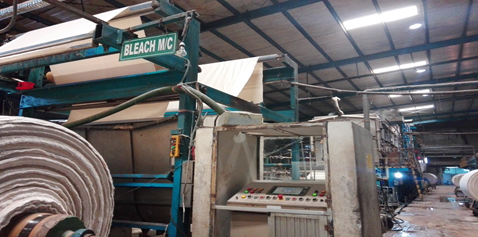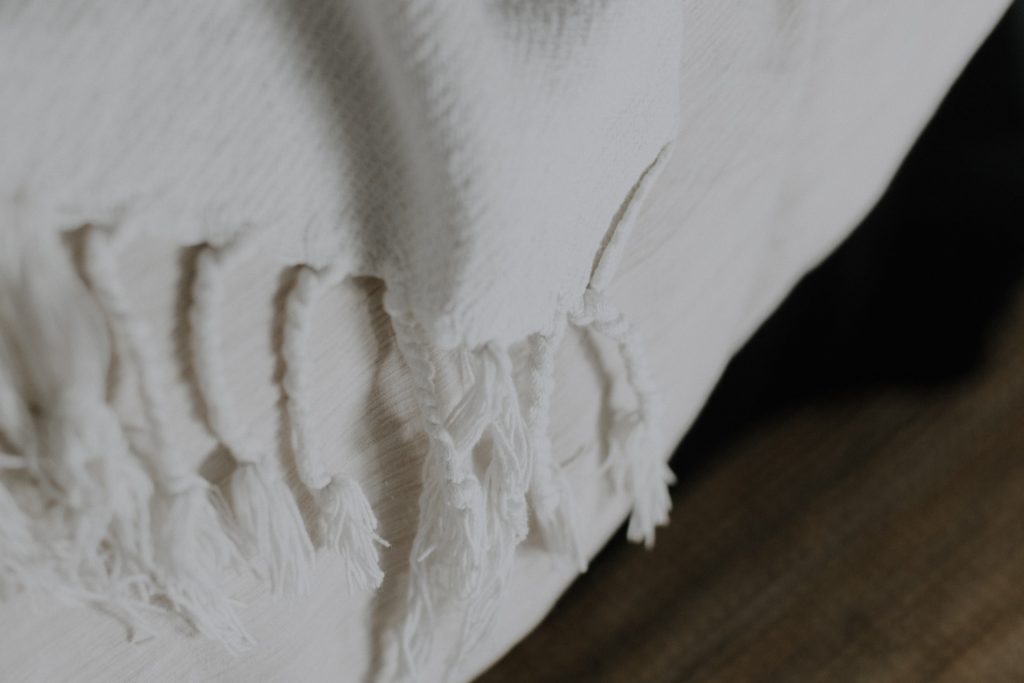What is Scouring?
On cotton fibres, this treatment removes fatty and pectic substances, softening motes and preparing the material to absorb the subsequent treatment agents. Scouring is usually carried out in soft water additives with textile auxiliaries such as absorbing agents, detergents, emulsifying agents, caustic soda and/or Solvay lye and sequestering agents. Alkali makes the fibre swell and enhance the action of surfactants. This treatment can be carried out on filaments, yarns and fabrics.
What is Bleaching?
Bleaching treatments are applied to eliminate any impurity and obtain a pure white tone, to prepare substrates for low-density dyes or prints and to level off undesired tone variations. Bleaching agents mainly used for cellulosic fibres are sodium hypochlorite and hydrogen peroxide.
Bleaching operations can be carried out on yarns, woven fabrics and knitted fabrics with continuous and discontinuous process in circulating liquor machines (autoclaves, jigger, paddle wheel, jet, overflow), semi-continuous (pad-batch, pad-roll). Continuous bleaching can be carried out on knitted fabrics using a J- box. The products to be used on the fabric are applied by means of suitably positioned mangles; the fabric is introduced in the machine where it remains for the time necessary to complete the bleaching process.
Machine Parameters :
Brand name : Red flag
Origin : China
Scouring temp (steamer) : 98 *c
Bleaching temp (steamer) : 100*c
Chemical bath temp : Room temp
Fabric speed : 35-40 m/min
Pick up % :90- 95%
Dwelling time in steamer :30-45 min
Utility : steam, water, electricity, compressed air.

Chemicals for Woven scouring:
| Chemicals | Function | |
| NaOH | Removes oil & wax | |
| Detergent | Washing agent | |
| L20 | Removes hardness | |
| Soda ash | Maintain pH |
Parameter for scouring:
Temp : 100*C
Speed of fabric : 35-40 m/min
Pick up % : 85-90%
pH :9-10
Material flowchart for Woven Scouring & Bleaching Process:
Batcher
↓
Free r/r
↓
J-box
↓
Washing box (normal wash)
↓
Padder
↓
Washing box (normal wash)
↓
Band r/r
↓
Chemical bath
↓
Padder
↓
Steam box
↓
Washing
↓
Dryer
↓
Batcher
Determination of scouring efficiency:
The main purpose of scouring is to improve the water absorbency of fabric. This is tested by several tests such as
- Water drop absorption
- Sinking time test
- Capillary rise method
Among these, water drop absorption test is simplest and quick. Therefore this test is commonly used.
In this method a drop of water is placed on the dry scoured fabric. If the drop of water is absorbed within 3-5 seconds then it is considered that scouring operation is carried out efficiently.
If the drop of water floats on the fabric surface for a long time (more than 2 minutes) it indicates that the scouring is not done efficiently and there is a need to repeat the process.
Chemicals of bleaching:
| Chemical | Function | |
| H2O2 | Bleaching agent | |
| NaOH | Maintain pH | |
| WBA | Detergent | |
| OKK | Peroxide stabilizer | |
| ID | Hole remover) | |
| L20 | sequestering agent |
Parameter for bleaching:
Temp : 98*C
Speed of fabric : 35-40 m/min
pH : 8-9
Pick up % : 90-95 %
Bleaching Efficiency:
The bleaching efficiency can be tested by expressing the whiteness of bleached fabric in terms of whiteness index (or percentage reflectance). The whiteness index of 68-70% and above can be considered as acceptable whiteness.
For measurement of whiteness, spectrophotometer equipment is essential.
If a standard white fabric is available then whiteness of the bleached fabric can be compared with the standard white fabric visually. This test can be done in the absence of equipment. However, the test being visual it can be subjective. Therefore, instrumental test is recommended to avoid any discrepancy.
| Fabric | Whiteness index no | |
| 1. | Accepted value | 68-70% |
| 2. | For deep shade | 60% |
| 3. | Applied OBA | 125-130% |
Ref. :
- Understanding Textile for Merchandiser by Engr. Shah Alimuzzaman Belal, Bangladesh University of Textiles.
- Based on “Industrial Attachment on Asian Textiles Mills Ltd” by Fatema Akter, Md. Kamrul islam, Jishan Ahmed &Al-Amin under supervision of Kawser Parveen Chowdhury, Lecturer, Department of wet Processing Engineering, Bangladesh University of Textiles.

